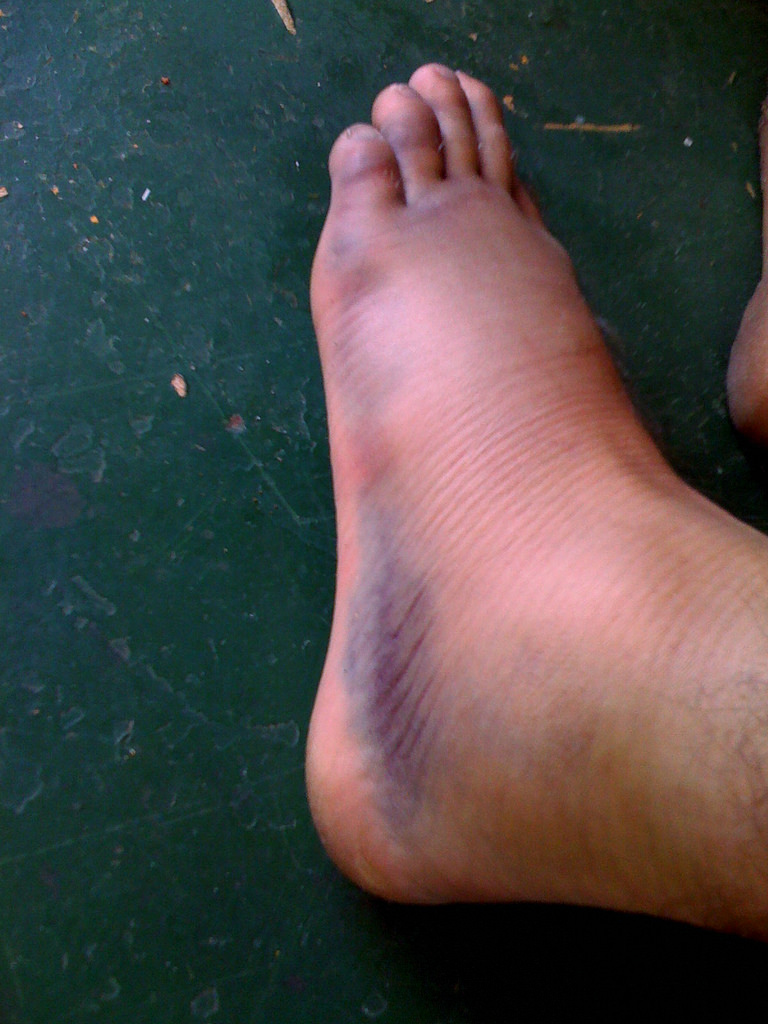
Ankle sprains, commonly called a “rolled” ankle, often occur while running, walking on uneven ground, or during sport-related activities. Typical treatment involves rest, elevation, ice, and an elastic wrap to reduce swelling. Although the pain and swelling usually improve quickly, up to 80% will sprain their ankles again. Imagine if your car broke down and there was an 80% chance that same problem were to occur again. Not Okay! The rate of ankle re-injury is so high because of two factors. This article breaks down these two missing pieces to put an end to sprained ankles, once and for all!
The Brain to Ankle (Internet) Connection
To best understand an ankle sprain we must first understand the basics of the central nervous system. Your central nervous system (brain) is like your personal internet connection. The brain connects messages and movements to and from other parts of your body. When you roll your ankle, that brain connection becomes temporarily delayed. If we don’t reset the signal soon after the injury then that signal becomes permanently delayed. You’ve gone from high-speed internet to dial-up. So the next time a sudden challenge arises to that ankle – say while hiking on the Front Range – your ankle is operating with a slower connection speed and more susceptible to sprains. This delayed process is repeated time and time again with each sprain. That is, until you reset your internet connection. The second missing piece to sprained ankle prevention is respecting the importance of healthy joint motion.
Joint motion is the relationship between bones in motion. A healthy joint has smooth joint surfaces and tight ligaments to properly secure it. However, with a freshly sprained ankle the ligaments and sense receptors get temporarily stretched, like a rubberband, and the joint surfaces separate. Those temporarily stretched ligaments and signals need to be reset, if not, the temporary stretch turns into permanent looseness.
The brain typically uses a reactive, ultra-fast connection to maintain ankle stability during difficult ankle activities. After the pain and swelling subside you’re left with delayed brain signals and loosened joint motion – two factors you do not want on your next hike.
Reset the Brain!
Once pain with walking and swelling have resided, check out the exercises below. Look to your other ankle for a comparison. Following the initial acute injury, there is a high risk of re-injury due to a lack of resetting the brain’s connection.
To prevent your next ankle sprain we need both:
Fast sensory input from the brain to ankle
Smooth joint motion between the ankle bones
Just like we load a muscle with weight to get stronger, we load the central nervous system gradually to get more coordinated. This exercise helps to restore natural joint motion to smooth out the joint surfaces within the ankle. Try the exercise below before hiking, walking, or sports-related activities.
After you’ve smoothed out the joint motion, you need to send strong signals back to the brain. This starts by challenging the ankle-to-brain connection in a pain-free fashion.
You load a muscle with weight to get stronger, you also load the central nervous system to improve coordination.
At Heather Lane we provide advanced manual techniques to optimally restore normal joint movement. This means you won’t have to worry about your “weak” ankles on your next hike.
Citation: Dawid Bączkowicz, Krzysztof Falkowski, Edyta Majorczyk. J Orthop Sports Phys Ther 2017;47(8):570-577. Epub 4 Nov 2016.
The information provided on this site is intended for your general knowledge only and is not a substitute for professional medical advice or treatment for specific medical conditions. You should not use this information to diagnose or treat a health problem or disease without consulting with Heather Lane Physical Therapy or another qualified healthcare provider.



